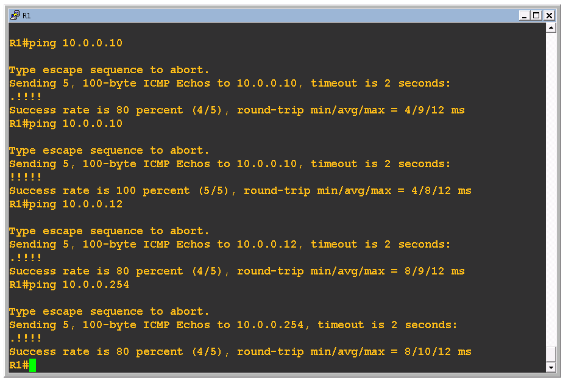


- GNS3 CANNOT CONNECT TO LOCAL SERVER INSTALL
- GNS3 CANNOT CONNECT TO LOCAL SERVER PASSWORD
- GNS3 CANNOT CONNECT TO LOCAL SERVER PC
- GNS3 CANNOT CONNECT TO LOCAL SERVER FREE
The “Console port” and “UDP tunnel port” ranges are populated by default.
GNS3 CANNOT CONNECT TO LOCAL SERVER PASSWORD
GNS3 CANNOT CONNECT TO LOCAL SERVER PC
GNS3 CANNOT CONNECT TO LOCAL SERVER FREE
Please see my new website for a step by step guide, including screenshots and network diagrams.Īs always, if you have any questions or have a topic that you would like me to discuss, please feel free to post a comment at the bottom of this blog entry, e-mail at or drop me a message on Reddit ( OzNetNerd). It is receiving log messages from both R1 and R2 (10.50.50.1 and 172.16.15.2 respectively): Here is an example of a Syslog server running on the physical PC. Once you have done that, your data will be able to flow freely between the virtual network and your physical PC. Note: You will need to add a route for every subnet you are using in your virtual GNS3 network and point it out of your loopback interface. This can be confirmed by sending a couple of pings: Your PC will now be connected to the virtual network. Configure the adapter with the above mentioned IP address. To configure this, in Windows, navigate to the “Manage Network Connections” settings and locate your “MS Loopback Adapter”. Once you have done the above, your GNS3 topology should look like this:Īs you can see from the example topology above, the physical’s PC’s address is going to 10.50.50.2.

Failing to do so may prevent your setup from working.Ĭonnect the Cloud node to one of the routers in your topology the same way you connect other devices to one another. Note: Make sure your IP address plan does not conflict with the network that your physical PC connects to. Give a thought to your IP address plan too. Next, create your GNS3 topology the way you normally would. At the top of the screen you’ll see the “Generic Ethernet NIO (Administrator access required)” dropdown menu.Ĭlick on the dropdown and select the “MS Loopback Adapter” option, then click “OK”. Once GNS3 has started, locate the “Cloud” node in the “Node Types” panel and drag it in to the workspace.ĭouble click on the “Cloud” node, then, when the new screen opens click on the “NIO Ethernet” tab. You still need to follow the above instruction. Note: Using an Administrator account is not enough. To do this, you have to right click on the GNS3 icon, and select “Run as Administrator”. Next, you’ll need to fire up GNS3 as an Administrator.
GNS3 CANNOT CONNECT TO LOCAL SERVER INSTALL
If you find this guide does not work for you, please disable all Firewall and Malware Prevention software and try again.įirst, you’ll need to install a loopback adapter on your PC. Note: PC Firewall software as well as Malware Prevention software installed on your PC can prevent this process from working. For example, you will be able to use it has a DHCP server,Web server, Syslog server, packet sniffer, etc, as well as a normal networked PC. Note: Once the PC is connected to the virtual GNS3 network, it will act as if it were connected to a real network. If this happens to you, rebooting your PC should resolve the issue. Changing the routing table may cause you to lose network connectivity to parts of your network. Note: Before you make any changes to your PC’s routing table (as per the instructions below), please make sure you know what your doing. In this blog entry, I’ll explain how this can be done using GNS3’s cloud object. What some people struggle with is connecting their physical PC to their virtual GNS3 network. Update: Please also see my Virtual Equipment + Physical Equipment = Big Lab post for more information.Īs you already know, GNS3 allows you to create virtual routers on your PC.


 0 kommentar(er)
0 kommentar(er)
